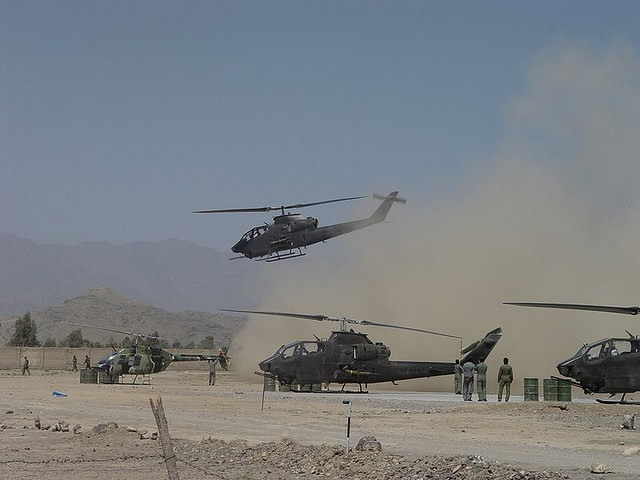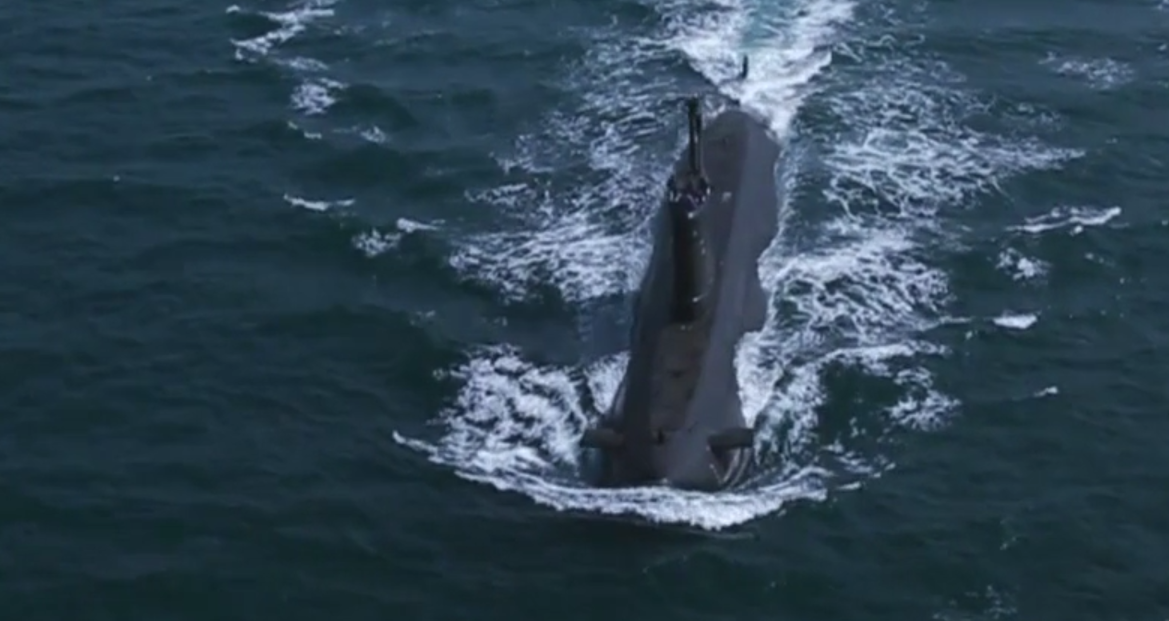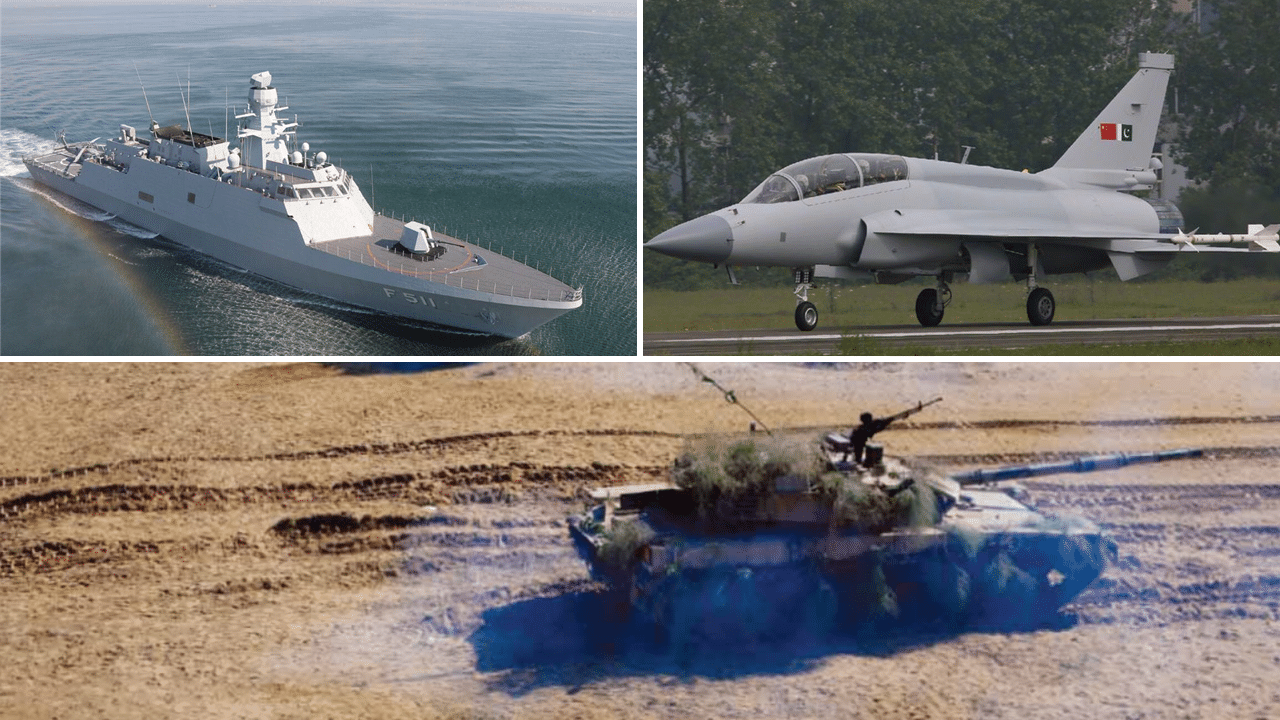2815Views 6Comments

Pakistan’s Shift to COIN Part 2: The Centrality of Army Aviation
04 December 2015
By Bilal Khan
Continuing from last week (Pakistan’s Shift to COIN Part 1)
Amongst the earliest comprehensive military development programs set up by the U.S was the refreshing and enhancement of the Pakistan Army Aviation (PAA) Corps. Although the PAA had a fleet of transport helicopters, the overall capability of the force was not as effective as it needed to be, even in the general sense, much less counterinsurgency (COIN). In 2006 the Army only deployed 19 troop-lift capable helicopters to the Federally Administered Tribal Areas (FATA), among which only 12 were available for use due to maintenance commitments.[1] Given the geographical realities of FATA, i.e. the mountainous and largely underdeveloped terrain, so few helicopters were not enough for what the Army needed in order to engage in the operations expected of it. Besides transporting personnel, other elements for COIN in FATA, such as area wide surveillance or ascertaining safe routes, were not readily possible. According to the Center of Naval Analyses, Pakistan “had long complained about shortages in aircraft availability to support ground forces, the 2005 Pakistani earthquake provided U.S. and other coalition military forces a clear view of the extremely limited Pakistani Army helicopter availability.”[2]
In 2006 Pakistan became a recipient of the U.S Secretary of Defense’s “train and equip” mandate (also known as 1206 funding) with regards to aviation, not only in terms of immediate equipment (mainly upgrades and spare parts for existing aircraft), but also specialized training such as flight in limited visibility as well as medical evacuation (MEDEVAC). It is important to note that this wave of funding was almost entirely focused on enhancing the SSG’s Quick Reaction Force (QRF), which by this point were taking on most COIN operations in-between the Army’s major offensives. For example, the funding for 2007-2008 was earmarked for “rapidly [developing] the capability of the SSG to conduct vertical insertion night time company-sized attack helicopter raids against terrorist targets in the FATA.”[3] Equipment transfers included body armour for the SSG as well as aviation personnel armour, small weapons and weapons modifications (e.g. scopes), personnel radios, and helicopter modifications, such as a door-mounted machine gun for the Army’s existing Mi-17 transport helicopters.[4]
Although comparatively minor in their financial value ($34 million), these programs had a major impact on the efficacy of the SSG’s QRF in FATA. Whereas there were no nighttime helicopter-based raids prior to the program, a fifth of all raids after its implementation were nighttime (totalling 1200 hours at the time of the Center of Naval Analyses’ writing).[5] The added capacity of being able to conduct nighttime MEDEVAC not only enhanced personnel survivability and casualty reduction, but served as a wider felt morale booster.[6]
This was paired with major hardware transfers in the form of surplus AH-1F Cobra dedicated attack helicopters and new-built Bell 412 general utility transport helicopters. In addition, the U.S opened the gates of spare parts for Pakistan’s existing fleet of American helicopters, enabling the PAA to shore up a higher rate of operational aircraft.[7] By 2015 the PAA had increased its AH-1F/S fleet from its pre-2001 levels of under 20 to 40-50 units.[8] The Russian Mi-17 and Mi-171 also became the mainstay transport helicopter in the PAA Corps as well, with at least 50 (possibly 80-100) in service.[9] In turn, the PAA took delivery of 26 Bell 412 general utility helicopters from the U.S; it was slotted to order another 30 from the U.S in 2010, but this has not materialized.[10]
Dedicated Attack Helicopters
The PAA’s AH-1F/S Cobras (i.e. its dedicated attack helicopters) form a central aspect of the Army’s COIN campaign in FATA. Retired Brigadier Farooq Hameed Khan told Jane’s, “[helicopters] are an essential centre piece in the kinds of operations being undertaken by the Pakistan Army.”[11] From the start of the campaign to today the primary role of the Cobra is to provide close air support (CAS) in the form of suppressive fire in support of the ground forces. Initially that was mostly the SSG, who would require Cobra support when in the infiltration and exfiltration phase (using transport helicopters such as Mi-17/171) of their operations.[12] An SSG commander told the Center of Naval Analyses, “all of our air assault missions require protection for lift [Mi-17] assets; without the Cobras, we still go but we expose ourselves to danger.”[13] In addition, the AH-1F/S have had a psychological impact on Army personnel and insurgents alike, with the latter acting more constricted in their actions whenever the Cobras were present in the area.[14] Overall, the Cobras are seen by the Army as having a “deterrence effect” on the insurgents.[15]
The flexibility at which the PAA could operate its AH-1F/S (and helicopters generally) also speaks to the realities of the FATA theatre as well. The insurgency, while noticeably effective in 2005-2010, almost entirely lacked (and continues to lack) credible anti-air warfare (AAW) capabilities, even in the form of operable man-portable air-defence systems (MANPADS). Within this space the PAA has been able to heavily use its AH-1F/S for the entirety of the Army’s presence in FATA (to this day under Zarb-e-Azb). With the airframes reaching (and possibly exceeding in some cases) their useful life the Pakistan Army is in the process of acquiring new-build attack helicopters.
Future Attack Helicopter Plans
Amongst the Army’s up and coming purchases the most high-profile would be the acquisition of 15 AH-1Z ‘Viper’ attack helicopters from the U.S. In a $952 million deal including spare parts, training, maintenance support and 1000 AGM-114R Hellfire II air-to-ground (A2G) missiles,[16] the AH-1Z will form the nucleus of the PAA’s future attack helicopter fleet. The AH-1Z is a distant descendant of the AH-1F/S currently in use by the PAA, but it is an entirely different system boasting a twin engine design with considerably more payload and a more advanced on-board electronics suite. For example, the AH-1Zs being procured by the PAA will include Top Owl helmet-mounted-display (HMD) systems, which can enable the AH-1Z pilot to cue optically-acquired targets to the aircraft’s weapon (such as the Hellfire II)[17]. The Hellfire II-R being acquired by the PAA retains the Hellfire II’s anti-tank capabilities, but are additionally equipped for destroying fixed structures (i.e. buildings).[18] Given the investment necessary to set-up the logistical and maintenance infrastructure for these helicopters, it is possible that the PAA will acquire additional AH-1Z, perhaps incrementally in line with specific AH-1F/S units being phased out.
In parallel with the AH-1Z the PAA is also in the process of inducting the Russian Mi-35M; in August 2015 Pakistan made an initial batch order of four.[19] The Mi-35M is an export variant of the modernized Mi-24 “Hind” and can be equipped with modern A2G missiles similar in concept to the Hellfire II. But unlike the AH-1Z, the Mi-35M can carry up to eight troops. One of the drawbacks noted with using the Mi-17 in air assault missions with the SSG’s QRF was the fact that the Mi-17 did not offer much protection in the cockpit area (requiring pilots to wear aviator body armour).[20] The Mi-35M would rectify that thanks to how its design incorporates significant armoured protection in that area.[21] In tandem with the attack helicopter aspects of the platform, the Army will likely use it to ferry, support and/or escort SOF personnel during assault missions. Jane’s was told that the PAA could acquire up to 20 Mi-35s in the long run, and it is likely this will be done on an incremental basis using the Army’s existing standard budget (which is how the initial batch of four is being financed).[22]
The Chinese Z-10 is the less understood aspect of the PAA’s attack helicopter plans. The Z-10 “Fierce Thunderbolt” is slotted to be the People Liberation Army (PLA)’s mainstay attack helicopter. It seeks to emulate the core aspects of modern Western platforms such as the AH-1Z by including a modern electronics suite, active self-protection measures, HMD and guided A2G missile capability. The PAA took delivery of three such units in late 2014 and has reportedly been using them over FATA, but it is unclear if it intends to formally acquire the platform.[23] It is possible that the Z-10 is being seen as the future mainstay of the PAA’s attack helicopter fleet, particularly with regards to the eastern front facing India. The Z-10 is not as sanctions prone as the AH-1Z, and in the context of a state-to-state conflict, that – alongside the requisite performance benchmarks – would be a key consideration.
Transport and Utility Helicopters
With the Tribal Areas being remote and mountainous regions makes airlift capabilities a vital component of any operation, COIN or otherwise. Utility helicopters take on a wide range of roles including troop transport, delivering supplies, undertaking reconnaissance and supporting assault missions. In the early 2000s the PAA had relatively deficient airlift capabilities, most of this was attributed to a lack of spare parts[24], ostensibly due to the effect of American arms sanctions in the 1990s as well as the reality that the bulk of the PAA’s airlift fleet was (and to a great extent still is) composed of aged airframes.
Over the past decade the PAA steadily replenished and enhanced its utility helicopter fleet, with the Russian Mi-171 forming the workhorse of the PAA’s transport fleet. The Mi-171 is a durable and versatile platform capable of carrying as many as 30 troops or up to 12 stretchers (for medical evacuation or MEDEVAC). The Mi-171 can also carry up to 5 tons of supplies using an external slung.
It is unclear exactly how many Mi-171s the PAA has in service at the moment, but the numbers vary quite considerably. For example, Flight Global’s 2015 World Air Forces directory had the PAA operating 49 Mi-171s, but an earlier print from 2008 set it at 85. It is possible the variance may be due to issues relating to maintenance and repair (owing to the heavy usage these helicopters are seeing over FATA). If this is the cause of the variance, then it is important to acknowledge that the Army is working on addressing it by negotiating with Russia for the establishment of a maintenance and repair centre for these helicopters in Pakistan.[25]
In addition to the Mi-171s the PAA also procured 26 Bell 412s from the U.S. The Bell 412 serves as a general utility helicopter and it is capable of carrying up to 13 personnel. In 2010 the Pakistan Army requested another batch of 30 Bell 412s from the U.S[26], but it is not clear if this deal was ever finalized; Flight Global claims that the PAA’s Bell 412 fleet has (as of 2015) increased to 32 units, with an order for 2 still in processing.[27] There may be another option for the PAA in the form of the Bell UH-1Y ‘Venom.’ Given that the UH-1Y shares a high degree (84%) of commonality with the AH-1Z, the UH-1Y would be a smooth fit for the PAA in terms of maintenance and logistics.[28]
The PAA also has 45 SA330 Puma medium-lift utility helicopters.[29] These are amongst the older systems in the PAA’s fleet, but are still considered an indispensable asset on both the eastern and western fronts. That said, they are steadily reaching the point of needing to be replaced, but minus additional Mi-171s, Pakistan’s options are limited, at least from a financial standpoint.
One fairly plausible option could be the Airbus Helicopters EC725 Caracal, the latest (and vastly different) incarnation of the venerable Puma. A recent order from Poland for 50 units was valued at $3.5 billion U.S (albeit with technology transfer for local assembly and considerably training and maintenance support). As of June 2015 Kuwait was negotiating for the purchase of 24 EC725s for $1.1bn U.S. At a minimum of $50 million U.S a unit, the EC725 is not “cheap” by any measure, but it is a high quality system that could be heavily used for decades to come. Alternatively, the PAA could potentially consider the in-development Chinese Z-20, which seems to be China’s class equivalent to the EC725, NH90 and UH-60.
Light Utility Helicopters
The Pakistan Army ordered a total of 27 AS550 ‘Fennec’ light utility helicopters from Airbus Helicopters[30]. Although lightweight, the Fennecs are capable of a wide range of support roles, including COIN relevant ones such as reconnaissance and limited close air support (with the use of rockets). The PAA also has 19 Bell 206 ‘Jet Rangers’, but it is not clear if these are armed like the Fennecs, these are likely light transports.
Part 3 will cover the Pakistan Army infantry (and in relation to that, armour and artillery).
[1] David J. Kilcullen. “Terrain Tribes and Terrorists: Pakistan, 2006-2008.” Brookings Counterinsurgency and Pakistan Paper Seires. No. 3, 10 September 2009.
[2] Eric Thompson and Patricio Asfura-Heim. “Assessments of the Impact of 1206-Funded Projects in Selected Countries: Lebanon, Pakistan, Yemen, São Tomé and Principe.” Center of Naval Analysis. July 2008. p25
[3] Ibid. p25-26
[4] Ibid.
[5] Ibid. p26-27
[6] Ibid.
[7] Ibid. p31
[8] World Air Forces Directory – 2015. Flight Global. p26
[9] Ibid.
[10] “More Bell 412s for Pakistan’s Military.” Defense Industry Daily: http://www.defenseindustrydaily.com/2-More-Bell-412s-for-Pakistans-Military-06371/
[11] Farhan Bokhari. “Pakistan buys initial batch of four Mi-35s.” IHS Jane’s 360. 23 August 2015: http://www.janes .com/article/53758/pakistan-buys-initial-batch-of-four-mi-35s
[12] Thompson and Asfura-Heim. 2008. p31
[13] Ibid.
[14] Ibid
[15] Ibid.
[16] Defense Security Cooperation Agency: http://www.dsca.mil/major-arms-sales/pakistan-ah-1z-viper-attack-helicopters-and-agm-114r-hellfire-ii-missiles
[17] Thales Group: https://www.thalesgroup.com/en/worldwide/defence/topowlr-helmet-mounted-sight-and-display-helicopters
[18] Army Technology: http://www.army-technology.com/projects/hellfire-ii-missile/
[19] Bokhari. IHS Jane’s 360. 23 August 2015
[20] Thompson and Asfura-Heim. 2008. p29
[21] Air Force Technology: http://www.airforce-technology.com/projects/mi-35m-hind-e/
[22] Bokhari. IHS Jane’s 360. 23 August 2015
[23] Ibid.
[24] Thompson and Asfura-Heim. 2008. p25
[25] “Moscow, Islamabad Discuss Establishment of Helicopter Service Center.” Sputnik News. 08 November 2015: http://sputniknews.com/world/20151108/1029779205/russia-pakistan-helicopter-servic-center.html
[26] Defense Security Cooperation Agency: http://www.dsca.mil/major-arms-sales/pakistan-bell-412ep-helicopters
[27] World Air Forces Directory – 2015. Flight Global. p26
[28] Gareth Jennings. “Paris Air Show 2015: Bell Anticipates Eastern European interest in UH-1Y and AH-1Z helos.” IHS 360 Jane’s. 15 June 2015: http://www.janes.com/article/52246/paris-air-show-2015-bell-anticipates-eastern-european-interest-in-uh-1y-and-ah-1z-helos
[29] World Air Forces Directory – 2015. Flight Global. p26
[30] Ibid.



6 Comments
by jigsaww
Hi, this is good info.
Why isn’t PA going after europeans gunships and utility helos?
with US, it always is a risk of sanctions but PA also cannot afford to lower the quality standards, which is why i would say that PA should stay clear and away from chinese helos. Z-10 is a very new system and every time a pilot takes it up there, he is risking his life.
Also, do you know if PA is going to undertake a refurbishment of its cobras, since they have been overused in recent campaigns. Any MLU kind of thing for them ?
Do you have any information which helos is PAA using to provide air support to high ground…like siachin etc?
by saqrkh
European systems are expensive, but in the absence of a financing plan, Pakistan wouldn’t be able to buy from them. While France has underwritten its sales to Egypt, Pakistan doesn’t have a golden parachute in the form of KSA aid, that Egypt does. Given Europe’s precarious economic situation, we can’t expect them to back a Pakistani deal unless it involves hard cold cash or a clear sign that the Pakistani economy will generate the funds necessary to uphold a financing arrangement.
With the U.S and China, Pakistan has financing support in the form of aid (U.S) and discounted pricing and/or generous installment plans. From what I am reading on PakDef, it seems the Z-10 has turned out to be a pretty good platform, though the PAA will request some changes and additions. Haris Khan said we can expect around 40 or so Z-10s to be inducted. I think we, especially in the long-run, will see more.
The U.S doesn’t really see Pakistan as a commercial market in as much as a foreign policy interest, so its arms sales to Pakistan will always work through that lens. As long as COIN is an issue, Pakistan will get the AH-1Z and Bell Huey helicopters.
As for high altitude operations and Siachin, it seems the Lamas are still the mainstay, not sure if they’ll acquire more Fennec to eventually replace them.
by jigsaww
If Pakistan can do a JF-17 kind of JV on Z-10, there can be improvements expected as well as raising quality level. Z-10 does look like a proper gunship but im not sure of anything beyond that. Of course if PA acquires it, then it means it qualifies. I’d go with that.
by saqrkh
I’d also like to see them push on a new utility transport helicopter to replace the Puma. The Caracal, cost wise, isn’t beyond reason.
by MT
Z-10 is indeed one of the cheapest light combat fighter. It cost between 20-30 mill$ a piece.
by jigsaww
???